Dear Readers, Hardly any type of grain is as rich in important nutrients as millet. The power grain was almost forgotten but is now making a comeback in the kitchen. Here you can find out why millet is so valuable for your health and what you have to consider when using it.
Interesting facts about millet
The grain millet has it all. Not for nothing does her name mean something like “nutritious” and “saturation” in Indo-European.
The millet species, which belong to the sweet grass family, differ from each other in their colors and ingredients.
But they all have their healing effects in common – and it is precisely these that make millet a real power grain.
Millet was cultivated in Central and East Asia thousands of years ago, and it is said that it was used by humans as a crop for much longer. It is even said that millet is one of the oldest grains in the world. Seeds over 7,000 years old have been found in archaeological excavations near China and Mongolia.
It quickly becomes apparent why millet must have been so popular back then. Not only does it have many essential and healthy ingredients, the plant is also very undemanding and thrives even with a lack of water and on dry soil.
That is why millet is still one of the staple foods in Africa and Asia today.
For a while, millet was also one of the most important food sources in Europe. In the 17th century, the power grain gradually lost its importance and was gradually replaced by potatoes and corn. Because even if there were rarely crop failures and the millet was armed against drought, the people with potatoes simply achieved significantly higher yields.
Millet species
Even if millet is often only spoken of in general terms, this collective term actually includes more than ten different genera. These genera in turn contain numerous different millet species.
You don’t need to remember all the various millet names and their special features, in Europe it is mainly proso millet that is cultivated and used as food. Proso millet, in turn, includes the well-known species golden millet and brown millet.
They differ mainly in color and come in yellow, brown, and reddish shells. However, brown millet has a special feature: In contrast to the other types, it is a whole-grain product and therefore richer in dietary fiber and vital substances.
Nevertheless, golden millet can be consumed in large quantities and is certainly not overshadowed by its relative in terms of nutrients.
You will come across millet products in every supermarket, health food store, and health food store, but these are almost exclusively sold peeled. This is because the husk of millet is indigestible to our bodies.
Ingredients and nutritional values of millet
The distribution of the ingredients is as different as the colors of the millet species.
For example, the yellow grains are particularly high in beta-carotene, while the red and brown varieties have a higher concentration of antioxidants.
Despite their differences, all varieties have similarly high levels of protein, iron, magnesium, silicon, zinc, fluorine, and the important B vitamins.
It is precisely this combination that makes millet a real asset in the kitchen. Vegetarians and vegans in particular benefit from millet’s high protein and iron content, as these nutrients are mainly found in animal foods.
The important trace element iron is found so frequently in the power grain at 3 to 3.5 mg that just 400 grams of cooked millet can cover the entire daily requirement of an adult. The valuable trace element is essential for transporting oxygen in the blood and for generating energy in cells and muscles.
The 70 mg of magnesium in a portion of millet also has an enormously positive effect on the functions of muscles and nerves. In addition, magnesium increases performance and contributes to functioning energy metabolism.
The trace element copper is also found in abundance in millet and takes on numerous vital functions in the body. Among other things, it contributes to normal cell metabolism and the maintenance of connective tissue.
Millet is also a real all-rounder because of its share of valuable B vitamins: These include vitamins B1, 3, 5, and 6. They are essential for cell metabolism, wound healing, the function of muscles and nerves, and a good mental state.
Millet Health and Beauty
Millet also scores with its high fiber content and the few calories per 100 grams of the product. A portion of the super grains contains only 114 calories. Millet consists of 70% water, for the most part, has 1.4 grams of fat, and a full 3.5 grams of protein.
Effects of Millet
Although millet is a grain, it is very different from its related wheat, barley.
Its composition of elementary nutrients makes millet a popular food source, not only for diabetics, overweight people, and people with celiac disease.
For celiac disease
Millet is a real enrichment for people with gluten intolerance. This allergy, also known as celiac disease, leads to inflammation of the intestinal mucosa when gluten is consumed.
The reason for this intolerance, from which more and more people are suffering, is, among other things, genetically modified grain and increasing consumption of wheat products.
Even healthy people are increasingly complaining about abdominal pain and diarrhea after a gluten-rich meal. So it can’t hurt to give up grain protein every now and then.
Even though millet is a grain, unlike wheat, it does not contain gluten and is therefore compatible with everyone. In addition, millet has a healing effect on inflamed and damaged intestinal mucosa.
Prevents hyperacidity
Many foods can be classified as alkaline or acidic. As the name suggests, acidic foods lead to acidification in the body.
This means that toxins accumulate in the body and organs and cannot be completely eliminated naturally.
This can have dire consequences, overly acidic bodies are the ideal breeding ground for bacteria, germs, and fungi. In addition, hyperacidity leads to a bad mood, irritability and sometimes severe mood swings.
Cereals such as wheat and barley in particular promote acidification in the body and are therefore detrimental to health.
The taste of food has nothing to do with its classification food either creates acids or bases, but this process only becomes apparent during metabolism. Millet, like the pseudo-grain quinoa, has an alkaline effect and thus contributes to a healthy acid-base balance.
To lose weight
It is not surprising that the word millet comes from the Indo-European and means something like “saturation”. In fact, the miracle grain keeps you full for a very long time and with a surprisingly low number of calories.
Only about 114 calories are spread over 100 grams of millet. The high fiber and protein content also prevents cravings.
As an accompaniment to (steamed) vegetables, millet is not only a true source of nutrients but also an effective support for rapid and healthy weight loss.
For diabetics
Two independent studies have already been able to demonstrate the healing power of millet on diabetics. In fact, a millet cure worked wonders after just one month.
Because after 28 days of a diet consisting mostly of millet. The blood sugar level has dropped and the number of HDL cholesterol has increased significantly. This cholesterol is considered “good” because, unlike the bad LDL cholesterol, it does not cause the hardening of the arteries.
The reason for the increase in good cholesterol is the valuable dietary fiber in the power grain. This fiber is also able to reduce bad LDL cholesterol and prevent excessive insulin secretion.
Good for the blood
Millet has an enormously positive effect on our blood. No other grain has such a high proportion of iron and magnesium as the superfood. And iron in particular is essential for functioning blood production and normal oxygen transport in our cells and muscles. The trace element thus contributes to a functioning generation of energy and cell division.
This is why the power grain is so valuable for people with low iron levels. Especially vegan or vegetarian people, especially women, often suffer from an iron deficiency. You can recognize a deficit of the important trace element by the fact that you are often tired, sluggish, and upset. Skin, muscles, and hair also suffer from a deficiency.
Just a few hundred grams of millet cover the recommended daily requirement of this important element. If you want to give your body additional support, then you should combine the boiled millet with steamed vegetables or fruit. These usually contain a lot of vitamin C – and with this vitamin, your body can absorb iron much better.
For beautiful skin, hair, and nails
The grain not only provides relief for illnesses and complaints. The silicic acid in millet is a compound of water and silicon.
Silicon is the second most common element on earth and is found in every cell in our body. Nevertheless, silicon is water-soluble and can only really be absorbed by the body in the form of silicic acid.
Although there is not enough scientific evidence yet, there is some evidence that silicon has a positive effect on skin, hair, and nails. Among other things, silicon combats dry and rough skin. What is certain is that silicon is involved in the formation of bones, cartilage, and connective tissue. The nutrient also ensures stable and elastic artery walls.
Side Effects of Millet
Despite all of its health benefits, consuming millet is not always recommended for everyone. Millet contains dhurrin, which protects the plant. If it is injured, the plant releases hydrocyanic acid.
This is good for the millet itself, but not necessarily for us humans. This hydrocyanic acid is able to impair iodine metabolism and, in the worst case, to enlarge the thyroid gland.
Therefore, people who already suffer from hypothyroidism should avoid millet or at least discuss this with their doctor beforehand.
Nevertheless, this should not scare you or unsettle you. Dhurrin is actually found in many millet varieties. However, the rapeseed millet cultivated in Europe has dhurrin in significantly lower quantities. The yellowish varieties are least affected, especially golden millet.
Preparation of millet
Millet is not only healthy but also easy to prepare. Even if grain is no longer as popular today as it was a few hundred years ago you can find millet products almost everywhere: whether in conventional supermarkets, in health food stores, or in organic shops.
Prepare millet
You bought millet in the supermarket and want to use it to conjure up a healthy meal. Before you get started, however, you need to consider a few things. The secondary plant substance phytic acid is found in millet. This has the unwelcome property of binding important nutrients such as zinc, magnesium, and iron. As a result, they cannot be absorbed and utilized as effectively by the body.
However, you can easily wash the phytic acid out of the millet by soaking the grain overnight or at least for a few hours before cooking. Then carefully pour out the water.
The disadvantage of this process, however, is that not only the phytic acid is washed out. The important B vitamins are also water-soluble and are washed out of the millet during this process.
Cook millet
After you have freed the millet from the phytic acid, it can be processed into different dishes. Millet is always boiled in double or triple the amount of water.
Then the heat is turned down so that the grain simmers for five minutes. Then you take the pot off the stove and cover the grains and let them swell for another half hour.
Do not touch the millet during the swelling process, this may change the process.
If you didn’t let the millet soak for a period of time before cooking, allow the millet grains to simmer for at least 15 minutes before removing them from the heat.
From now on, millet goes well with all kinds of dishes: as porridge, stuffing for vegetables, as an accompaniment to soups, etc.
Millet grain pillows
Millet does not necessarily have to be consumed – the grains are also wonderful for external use. In the form of a grain pillow, millet works, for example, to relieve tension, menstrual cramps, and tired eyes.
You can easily make the grain pillow yourself. All you have to do is sew the millet grains into a suitable fabric. Then you can use the small pillow in two ways: as a cold or heat application.
For the heat application, heat the pillow at 100° Celsius for a maximum of 15 minutes. Millet has the property of storing temperatures in the grains for a long time. As a result, heat packs made from this grain are very durable and gentle. Millet heat packs stimulate blood circulation and relax the muscles at the same time. They help with stomach and abdominal pain.
Instead of heating the pillow in the microwave, you can also put it in your freezer. The cooled grains have an anti-inflammatory effect on the skin and effectively help with bruises and tired eyes.
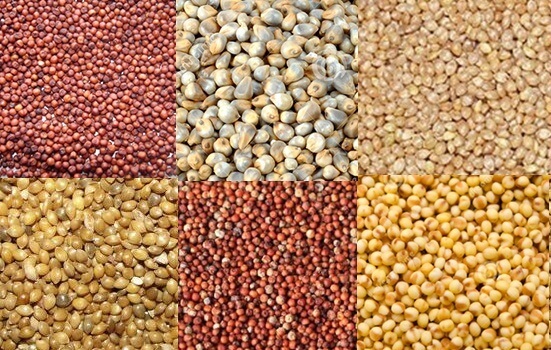
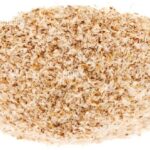

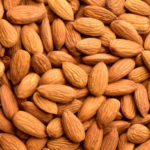
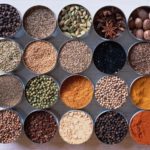
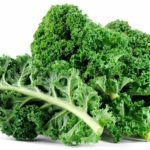

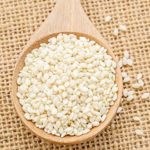
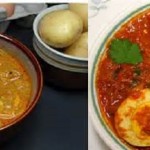
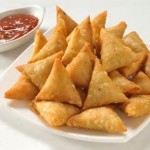
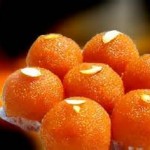

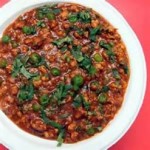
[…] diet with a six percent share of walnuts can also reverse the decline in motor and mental performance […]